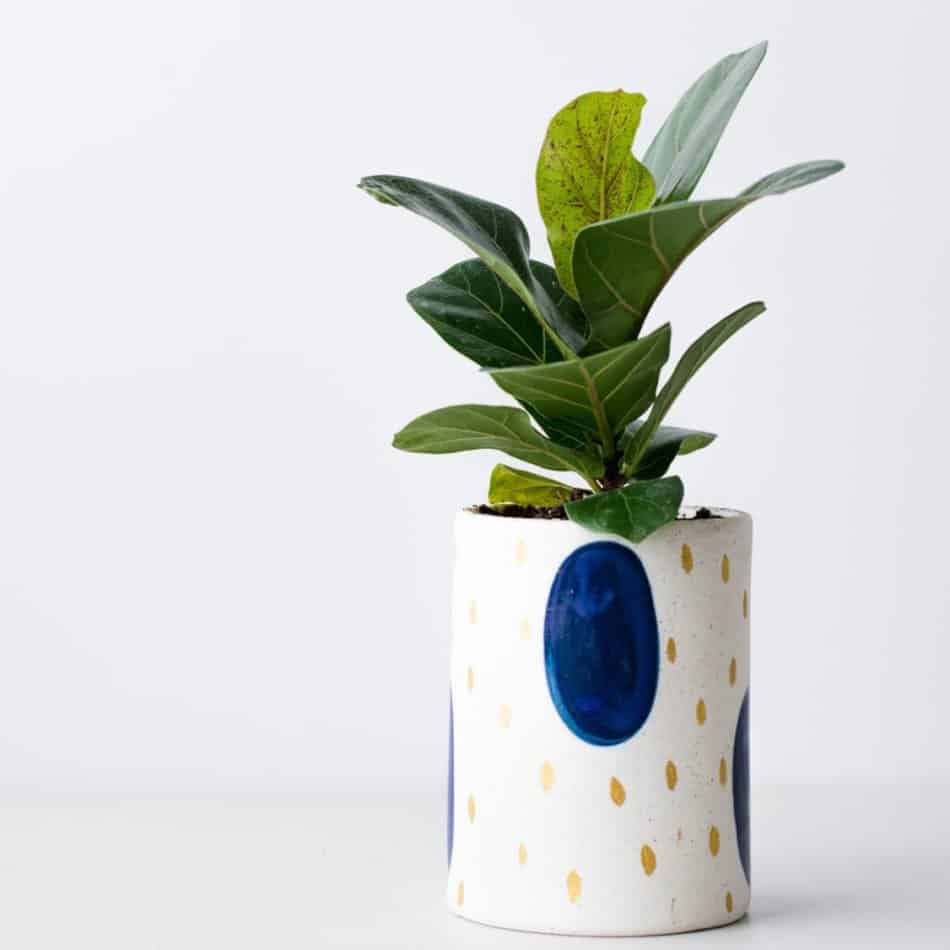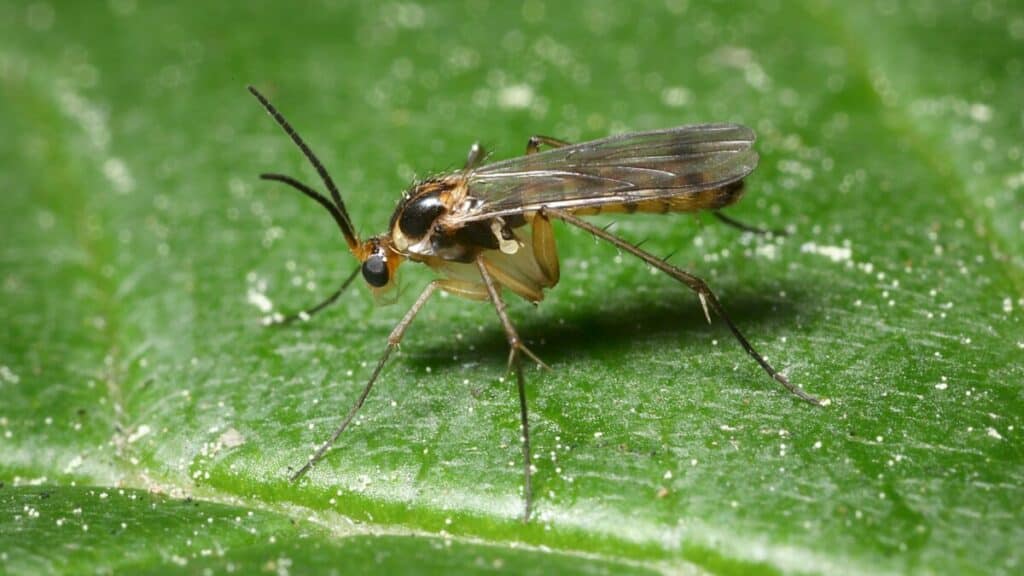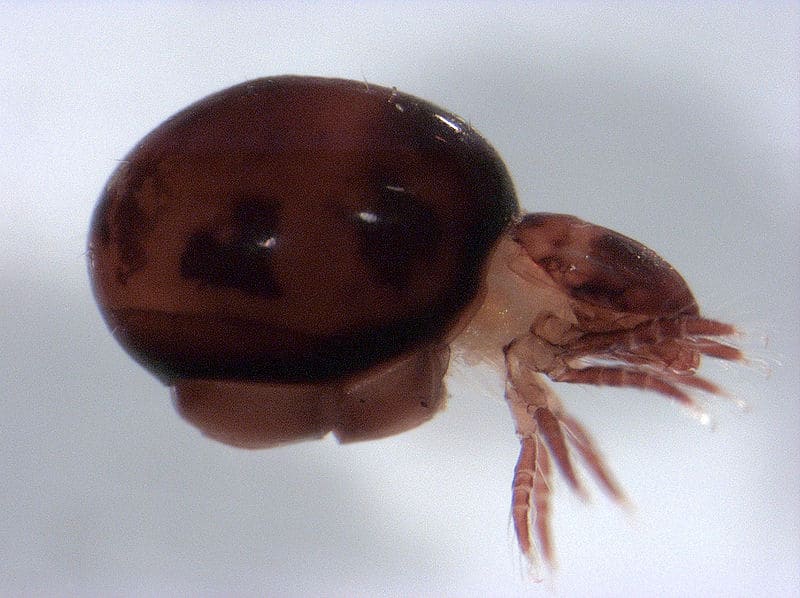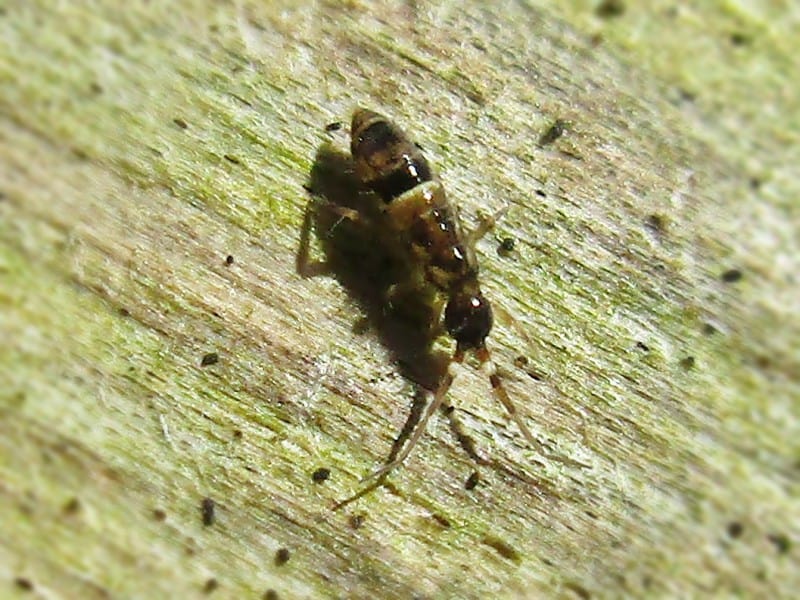
A short horror story: You get a new houseplant. You do your best to take care of it. You’ve ensured that it has the right soil, the right amount of sun, it gets enough water. And then one day, you look closely, and you notice that the soil around the plant is swarming with tiny little bugs.
What exactly are these bugs? Are they harmful to your plants or to you? And how do you get them out of your home? Let’s try to solve the mystery!
Fungus Gnats
If you’ve noticed tiny little bugs flying and crawling around your houseplants, there is a good chance they are fungus gnats. If they are black and they have wings, they are most likely fungus gnats.
These little monsters love to live in moist soil. If the top part of your plant soil is constantly damp, there is a high likelihood fungus gnats will start using it as a breeding ground.
What Exactly are Fungus Gnats?
Fungus gnats are basically very small flies. They typically belong to the family Sciaridae, but there are a couple of related families of flies which are also often referred to as fungus gnats (Diadocidiidae, Ditomyiidae, Keroplatidae, Bolitophilidae, and Mycetophilidae).
So why are they called fungus gnats and what makes them different from other gnats? Well, as you might have guessed, they feed on fungus (or rather, fungi). They especially love the fungi growing on decaying matter in soil. But that’s not the only thing they eat (more on that later)
How to Recognize a Fungus Gnat

An adult fungus gnat is typically 2-8 mm long. Their bodies are typically black (although shades of brown or gray could also be visible) with lighter, transparent wings.
There are small details on their bodies that can tell you if what you are looking at is a fungus gnat or something else, but we won’t get into that today because fungus gnats are typically very small. So, instead of looking closely at one gnat, observe their behavior.
Fungus gnats are not very good fliers. You won’t see them flying around your home or climbing up to the ceiling. Instead, you’ll see them only around plants, quickly crawling along the soil and making small, short flights. If it behaves like that: it’s most likely a fungus gnat.
What Do Fungus Gnats Larvae Look Like?
Once they find a suitable place, fungus gnats lay hundreds of tiny little eggs in plant soil. From these eggs come the larvae. The fungus gnat larvae are about ¼ inches long. They look like tiny little white/transparent worms with a black head.
However, there is a good chance you won’t be able to see the larvae unless the infestation gets really out of hand, as they typically hide under the surface of the soil. But, if you look really closely, you might see them.
If the soil is really moist and there are a lot of healthy larvae, you might be able to notice little slime trails across the surface of the soil, like from a snail only smaller.
Where Do Fungus Gnats Come From?
The thing with fungus gnats is that they can come from anywhere. Typically, they will come into your home on a plant you bring in from outside. Or, they might even be hiding in potting soil. It’s really hard to say where exactly they come from. However, that’s not really that important.
One way or another, you might get a fungus gnat in your home. The key is not in stopping them from coming in, but in making sure there are no suitable habitats for fungus gnats to grow. If fungus gnats find top soil around your plants that is constantly wet, they will start multiplying in there. And that’s when you start to notice them.
Are They Harmful?
Well, the first thing to know if you get fungus gnats is that it’s not a big deal. Fungus gnats are very common. They most likely won’t cause any damage to your plants (at least not immediately), and they aren’t harmful to humans at all.
If you have fungus gnats around your plants that are outdoors, you most likely don’t need to do anything. They aren’t very likely to stay for too long: natural predators and seasonal changes will take care of that.
However, if you have fungus gnats around your plants indoors, you might want to deal with the infestation ASAP. Why?
First of all, fungus gnats are quite annoying. They can multiply quickly and soon you’ll have hundreds of tiny little bugs flying around. They won’t bite you or anything, but having them there isn’t pretty.
Second, fungus gnats will spread from pot to pot, and if you let it go long enough, they might infect all of your houseplants.
Finally, fungus gnats can transmit diseases. In particular, certain types of fungal disease which can end up harming your plants. Those include: Pythium blight, Verticillium wilt, Botrytis blight and Fusarium wilt, and black root rot.
In short, fungus gnats are not a reason to panic and they will not immediately kill your plants. However, they can be harmful if you let them be, so it’s a good idea to take measures to get rid of them.
How Do I Get Rid of Fungus Gnats?
The easiest way to get rid of fungus gnats is by letting the soil dry out. Fungus gnats live only in the top part of the soil, and they can only survive and thrive if the soil is wet. If you let the top part dry out, the gnats might go away.
To do this, simply try to water your plants a bit less for a while. And when you do water them, do it from below, by putting water in the plant under the pot. Now, if you think your plants can’t handle that, there are some other things you can try.
Yellow sticky traps are the most common anti-gnat method. You can buy those in any garden supply store. Simply set them up around your plants and let the gnats commit suicide by sticking themselves to the trap. Since this only takes care of adult gnats (the larvae are in the soil), you might have to keep placing new traps for a while.
Another great way to deal with gnats is to use soil covers. There are special products you can buy for this, but using sand also works great. If you cover the soil with a thin layer of sand, gnats won’t find it a suitable place to live anymore.
Will Gnats Eventually Go Away?
Getting Rid of Gnats for Good?! Here’s what REALLY works
Where Do Gnats Come From? – 13 Most Common Examples!
Soil Mites
If you notice little black (or brown, or white, or red) bugs crawling around plant soil (but not flying), there is a chance they are soil mites.
What Exactly are Soil Mites?
Mites are a large group of arthropods. There are many thousands of different species of mites and they belong to the class of arachnids, meaning they are related to spiders and ticks. All of them also have 8 legs, just like spiders, but they are typically much smaller.
Now, there are all sorts of mites – some of them live in soil, others in water, others yet on plants, and some even under human skin (scabies mites). The main groups of soil mites are Oribatida, Gamasina, Uropodina, Astigmata and Prostigmata.
How to Recognize a Soil Mite

Soil mites come in all sorts of colors, including white, red, and even green. If you are seeing a black (or rather dark brown) soil mite, there is a chance they belong to the order Oribatida, also known as moss mites or beetle mites. However, it is difficult to precisely identify the species of mite because they are so tiny and there are so many different species. And you shouldn’t bother with that either – it’s enough to know it’s a mite.
The main characteristic of mites is that they are really tiny. Like 1mm or less, so barely even visible with the naked eye if you don’t pay attention. They have simple round bodies and eight legs.
Where Do Soil Mites Come From?
As you might guess, soil mites live in soil. If you have them in your home, they have most likely been brought in with soil, whether the soil around your plants, soil from your garden, or even the soil you bought at the garden store.
Are They Harmful?
The good news is, soil mites are not harmful at all. They will not kill or harm your plants. Instead, they help decompose the organic matter in the soil, somewhat like rainworms.
How Do I Get Rid of Soil Mites?
You don’t really need to get rid of soil mites. Most of the time they are no reason to worry. They will not hurt your plants and might even be beneficial. But if their population gets out of hand, soil mites might become quite visible, crawling around your plants. Some people might find that unsettling.
In that case, you can try and get rid of them with simple DIY methods like using a mixture of soap and water to soak the soil, neem oil sprays, or diatomaceous earth. All of these methods should work, but you might need to reapply the product of your choice multiple times before the mites are dealt with.
Springtails
What Exactly are Springtails?
Springtails (Collembola) are tiny six-legged animals that love to feed on decaying organic matter – just like most tiny black bugs you will find in soil. Springtails love to live in damp soil as well as in piles of decaying leaves.
How to Recognize a Springtail

Springtails come in a variety of colors, but many of them are dark – black, brownish, or gray. They are very small, so it might be difficult to see the exact color, but it doesn’t matter – there are other signs that let you recognize this bug.
Can you guess where the springtail got its name? Yes, they jump. These bugs are usually also very tiny – they are not even a millimeter long. If you look close enough, you’ll notice they have little antennae on their heads.
Now, there are two types of tiny jumping bugs you might see – fleas and springtails; but if they are living around your plants, the chances are – they are springtails.
To determine if a tiny jumping bug is a springtail or a flea, you can catch it and try to squish it. Springtails are easy to squish and have a rounded, soft body. Fleas are flatter and harder – therefore quite difficult to squish.
Where Do Springtails Come From?
Springtails might be brought inside with soil that comes from outside – especially if the soil has been constantly damp for a while. But, due to their ability to jump quite far, springtails might even decide to migrate from outdoors and into your home if you have houseplants.
Are They Harmful?
Springtails are more of a nuisance than a pest. They aren’t really harmful to plants or humans – they feed on decaying organic matter which soil is typically full of.
Only in extreme cases where a large springtail population develops and there isn’t enough food in the soil, they might start munching on plants. But that is very unlikely to happen.
However, if you notice springtails in your potted plants or in your garden, it might be a sign you have a moisture problem.
How Do I Get Rid of Springtails
As mentioned, springtails love water and moist environments. If you have springtails in your houseplants, it might be a sign you are overwatering. Springtails are fairly easy to get rid of, and just letting the soil dry out might be all it takes.
Another trick for getting rid of springtails is to soak the whole pot in water. Wait a few minutes and you’ll notice springtails floating up to the surface. Then, you can just wash them away.
Final Thoughts
The three main types of bugs that commonly live in houseplant soil are fungus gnats, soil mites, and springtails. The good news is that neither of those is especially dangerous. Fungus gnats and springtails love moist environments, so if you have them it might mean you are overwatering your plants.
Additionally, you might also see some other tiny black bugs on plant soil or around your plants. These include aphids, thrips, and flea beetles – but neither of those actually live in plant soil. For more on those check out these articles too:
How to Get Rid of Tiny Black Bugs on My Plants
How To Keep Bugs out of Your Greenhouse
What Are These Little Flies in My House (7 Examples)
Recent Posts
Tiny Black Bugs in Bathroom NO WINGS: What They Are and What to Do!
Finding tiny black bugs in your bathroom can be uncomfortable, to say the least. Especially if they are persistent, or they appear in very large numbers, which they often like to do. When it...
Can Caterpillars Hurt You? 10 Toxic Caterpillars & Everything You Need to Know to Stay Safe
Caterpillars are surely among the most fascinating members of the bug world, at least when it comes to the looks. They are so diverse, colorful, and pretty that it’s hard to believe. But...

